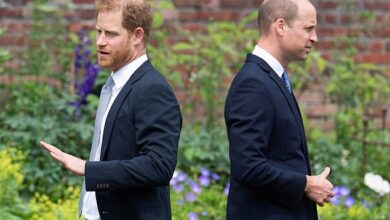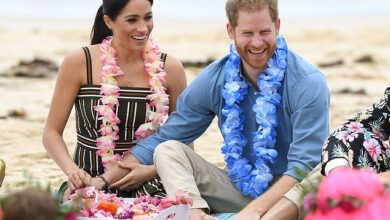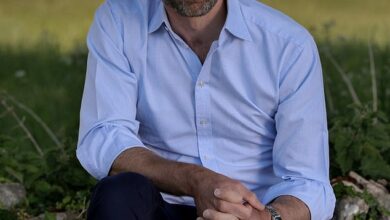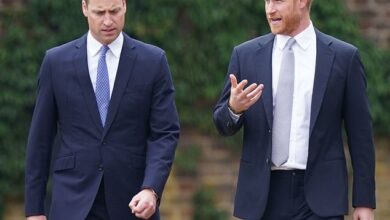Inside King Charles’ cancer battle: Why 75-year-old monarch could only give Prince Harry 30 minutes of his time, why he has not lost his hair and the real reason he has not revealed which type of the disease he is fighting

Buckingham Palace made an announcement in February which shocked the world –King Charles had cancer, and would be stepping back from public duties to receive treatment.
Incredibly, just six months on, he is now considered fit enough to travel 10,000 miles for the upcoming royal tour of Australia and Samoa in the autumn.
Courtiers have been clear from the start that there would not be regular updates on the health and recovery of the monarch – only when any major developments needed to be revealed.
Behind the scenes, the 75-year-old has had good and bad days, and like any cancer patient, the road to recovery has been a tough one, requiring him to come to terms with a new reality.
The usually energetic grandfather has been forced to take plenty of rest, protect himself from infection in an almost Covid-like ‘bubble’ – and even limit time with his son Prince Harry to protect himself from infection.
But the keep calm and carry on attitude of the monarch – much like his mother – means he has put on a brave face in public and shown little outward sign of what he has been enduring.
Royal watchers have understandably been concerned about His Majesty’s wellbeing, with many wondering what sort of treatment he has been receiving, why he has not lost his hair and what kind of cancer he has been battling.
Now, insiders are shedding some light on what the King’s path to recovery has looked like.
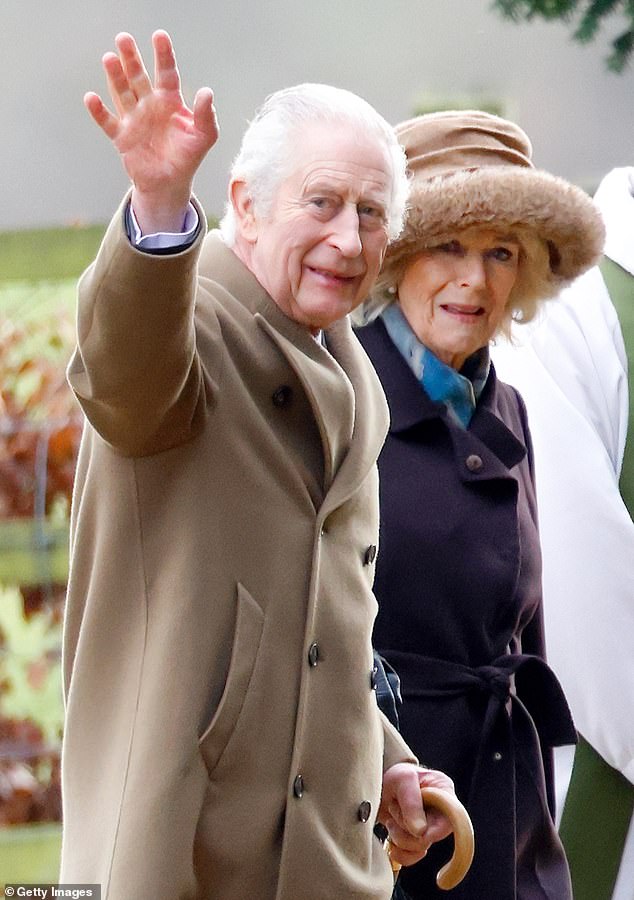
King Charles and Queen Camilla attend the Sunday church service on the Sandringham estate on February 4 – shortly before it was revealed that he had been diagnosed with cancer
In a sign of hope – as well as an insight into the trials Charles has been through over the past months – it was reported today that a source close to the monarch said: ‘The sun wasn’t shining in February, but it is shining now’.
The King was diagnosed with cancer after first attending hospital in January to receive treatment for an enlarged prostate.
While he has been open about his prostate problem, it is unlikely he will reveal what type of cancer he has, The Sun reports today, citing a source.
This is as he aims to ‘reach out and embrace as many people as he can impacted by cancer,’ they claimed.
‘The more specific you are the fewer people you are able to engage and support.’
The outpouring of support he received from the public for revealing he had undergone a prostate procedure – as well as the significant awareness it raised – encouraged the King to reveal his cancer diagnosis in the hope the same would happen.
Charles had his first public outing after his diagnosis was revealed at a cancer hospital on April 30, where he met with fellow patients.
His aides took the opportunity to point out that not all recovery programmes for cancer patients are the same.
It has been widely noted that he has not suffered any hair loss from his treatment, which was said to have been a natural concern for the King.
Thankfully, he has also not experience any debilitating side effects from the treatment, details of which have not been disclosed.
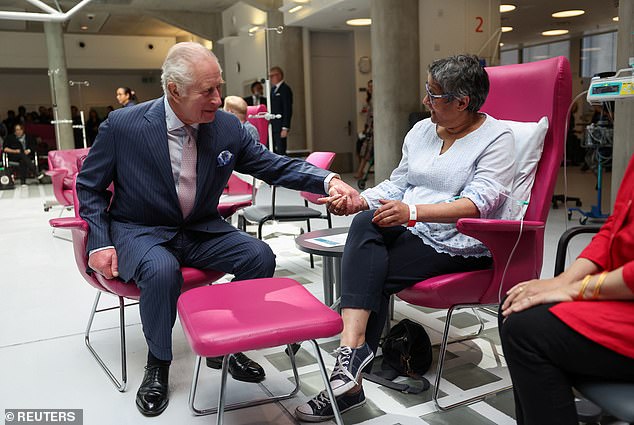
Charles had his first public outing after his diagnosis was revealed at a cancer hospital on April 30, where he met with fellow patients
A source told The Sun of his treatment that it is ‘not pioneering in any way as it’s available for any cancer patient.’
‘The treatments are highly evolved and sophisticated in ways previous treatments were not,’ they added.
The treatment did however prevent him from appearing at the Trooping the Colour in June on his horse Noble, who was instead ridden by Princess Anne for the King’s birthday celebration.
Claims at the time that the monarch had been left ‘furious’ by the decision are now believed to have been downplayed by the Palace.
He reportedly ‘accepted the reality of the situation’, understanding that even if it weren’t for the cancer, his prostate procedure would have stopped him riding anyway.
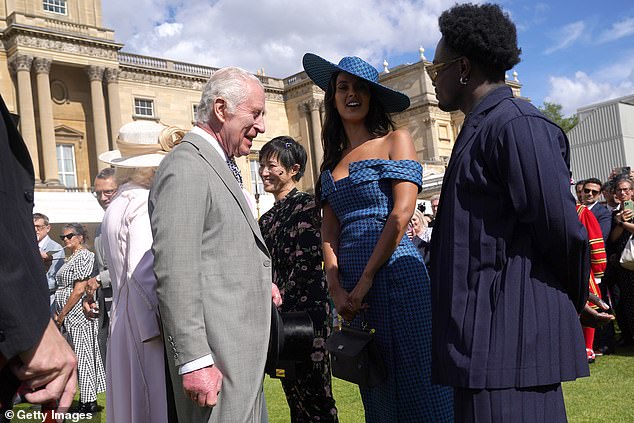
King Charles III speaks with Maya Jama and Campbell Addy at The Sovereign’s Creative Industries Garden Party at Buckingham Palace, on May 15
Rather than his ill health stopping him from carrying out his public duties, it has been claimed the decision to postpone his public facing role was made as a ‘precautionary measure’ because of the King’s diminished immune response to other diseases.
During his 103 days away from public duties, Covid-style tiers were in place and he was restricted to the amount of people he could be with.
He was planned to have weekly treatment in London and factor in vital periods of rest time at Sandringham, Highgrove and Windsor.
This was reportedly thrown into chaos early on in his treatment when his son, Prince Harry, announced he would fly in from Los Angeles to see his father.
The King delayed his helicopter flight to Sandringham, and Harry was given just 30 minutes of his company at Clarence House, due to plans which were put in place to avoid the King contacting a secondary infection.
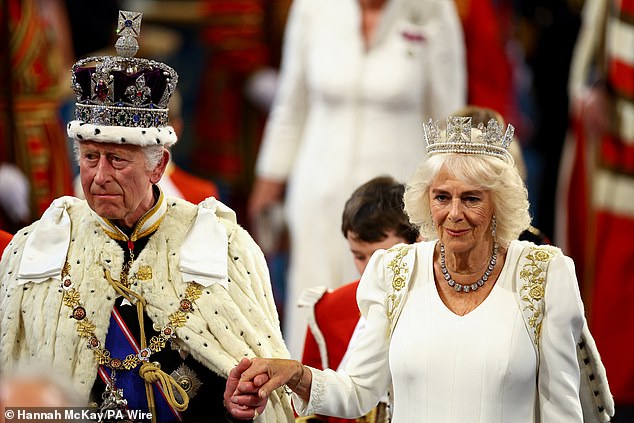
King Charles III and Queen Camilla, wearing the George IV State Diadem, during the State Opening of Parliament on July 17
As the warmer months approached they felt confident to relax the Covid-style tiers, allowing him to take part in crucial events such as the D-Day commemorations.
One source explained: ‘Rest and recovery has to be taken as seriously a priority as duty, public duty, so we build in rest periods and try to limit the number of hours a day that are public-facing duties.’
The King is also said to have been forced to eat at least a light snack at lunchtimes after skipping the meal his whole life.
Despite things getting almost back to normal – particularly on the surface, most notably with the King’s Speech last month – the Queen and the King’s closest aides are likely still urging him to take it easy as he continues on his road to recovery.

